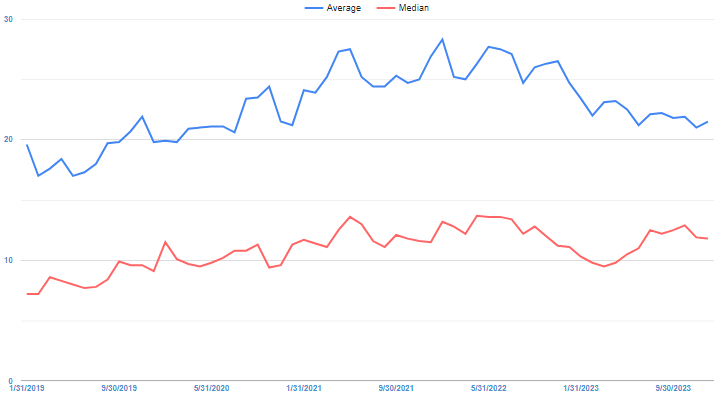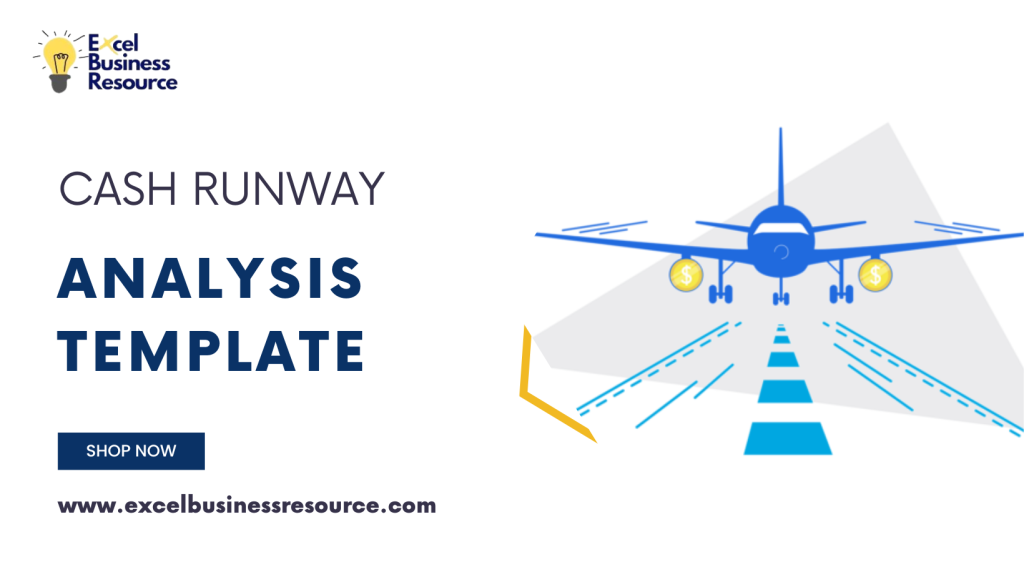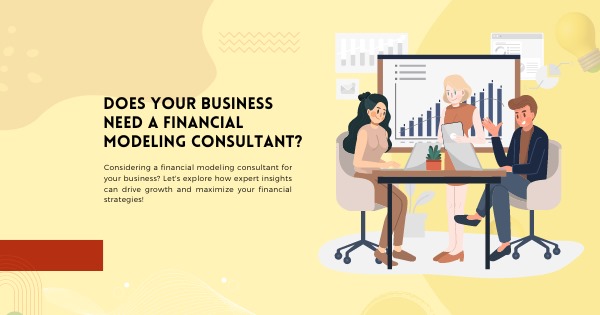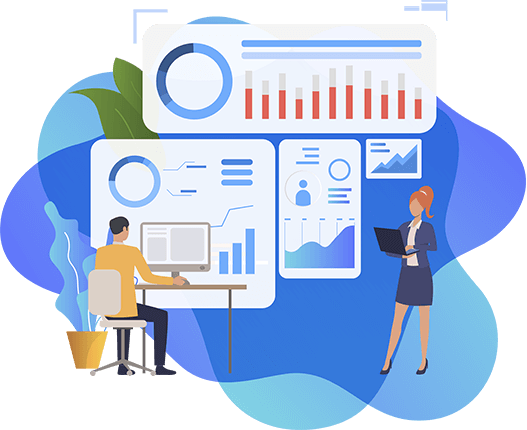It’s the lifeline, the oxygen, the heartbeat of any venture. But what exactly is cash runway, and why does it matter so much?
Imagine your business as a plane on the runway, ready to take off into the vast skies of success. Cash runway is the distance that plane can travel before it needs to refuel. In business terms, it is an analysis of how much cash reserve startups have before it running out of cash or to generate positive cash flow or secure additional funding.
After analyzing a startup’s runway, which is typically presented in months, founders primarily focus must be on the following before the funds run dry:
- Generating sufficient revenue to cover all expenses incurred by the startup.
- Securing additional investment or debt to cover expenses for the subsequent 6 to 12 months, tailored to the specific needs of the startup.
- Simultaneously pursuing revenue generation and investment acquisition.
- Tracking startup runway offers several benefits that are crucial for the financial health, creditability and sustainability of the business:
Financial Planning and Management: Tracking runway provides a clear understanding of how long the startup can operate before running out of funds. This information is essential for startup financial planning and analysis, allowing founders to make informed decisions about budgeting, resource allocation, raise funding schedule and strategic initiatives.
Risk Management: By monitoring runway, founders can identify potential cash flow challenges and risks well in advance. This proactive approach enables them to implement mitigation strategies, such as cost-cutting measures or fundraising efforts, to address potential shortfalls and avoid financial crises.
Investor Confidence: Investors closely scrutinize a startup’s runway as part of their due diligence process. A healthy runway demonstrates financial stability and sustainability, instilling confidence in investors and increasing the likelihood of securing funding or investment at favorable terms.
Strategic Decision-Making: Runway data provides valuable insights for strategic decision-making. Founders can use this information to prioritize initiatives, set growth targets, and allocate resources effectively, aligning their actions with the financial realities of the business.
Operational Flexibility: A clear understanding of runway allows founders to operate with greater flexibility and foresight. They can adjust their business strategies, timelines, and goals based on the available runway, optimizing the use of resources and maximizing the startup’s chances of success.
Cash Runway Analysis Using The Burn Rate
Since the two ideas are interconnected, it is impossible to create a cash runway without first understanding the burn rate.
Burn rate is the term used to describe how quickly a business uses its capital. Although it can be changed for any term length, this is typically calculated on a monthly basis.
Gross Burn Rate = Cash / Monthly Operating Expenses
How To Calculate Startup Runway
The best way to analyze the startup runway is to develop a startup’s financial plan using a startup financial model. The successful entrepreneurs & founders were aware of the amount of cash on hand and the consequences of continuing the business. They are also aware of what will occur if the business expands as planned in terms of recruiting, income, expenses, etc.
Moreover, calculating your startup’s runway is essential for understanding how long your business can operate before running out of funds. The runway is typically measured in months and is determined by dividing your current cash balance by your monthly burn rate the rate at which your startup is spending money. Here’s the formula:
Runway (in months) = Current Cash Balance/ Monthly Burn Rate
Let’s break down this formula with an example:
Example:
Current Cash Balance: $100,000
Monthly Burn Rate: $10,000
Runway=$100,000$10,000=10 months
In this example, your startup has a runway of 10 months, meaning it can continue operating for 10 months before exhausting its funds at the current burn rate. (You can also take the 3 months average of burn rate i.e 3 month average of expenses).
It’s important to note that the accuracy of this calculation depends on the stability of your burn rate and the consistency of your cash flow. If your burn rate fluctuates or your cash flow varies significantly, it’s advisable to use average of 3 month burn rate or reassess your runway regularly to ensure accurate projections. Additionally, consider including a buffer in your calculations to account for unforeseen expenses or changes in your financial situation.
What is the Ideal Burn Rate That an attract VCs
The industry or startup standard burn rate to attract venture capitalists can vary significantly depending on various factors, including the stage of the startup, the industry it operates in, its growth trajectory, and its business model. However, there isn’t a one-size-fits-all standard burn rate that universally attracts investors. Instead, investors typically evaluate burn rates in the context of the startup’s overall financial health, growth potential, and ability to achieve milestones.
That said, investors generally look for startups with a burn rate that aligns with their growth strategy and revenue projections. A burn rate that is too low may indicate a lack of ambition or insufficient investment in growth opportunities, while a burn rate that is too high may raise concerns about sustainability and financial discipline.
In some industries, particularly those with high-growth potential such as technology or biotech, investors may be more accepting of higher burn rates in exchange for rapid growth and market expansion. Conversely, in more mature or capital-intensive industries, investors may prefer startups with lower burn rates and a clear path to profitability.
Ultimately, the key for attracting investors is not necessarily the specific burn rate itself, but rather demonstrating a clear understanding of how the burn rate contributes to the startup’s growth strategy, market opportunity, and path to achieving key milestones. Startups that can articulate a compelling vision, backed by realistic financial projections and a disciplined approach to managing expenses, are more likely to attract investor interest regardless of their burn rate.
Historical Trends of Startup’s Runway
The market presents attractive data having some startups securing significant funding and maintaining runway exceeding two years, while an increasing segment faces the challenge of less than six months of runway. In 2019, 42% of startups fell into the latter category, a figure that declined to 38% in 2020 and further to 36% in 2021. However, by 2022, there was a reversal in this trend, with the proportion climbing back to 38%, and subsequently increasing to 39% in 2023.
This uptick in startups operating with limited runway cause a growing struggle for startups and founders. As more companies encounter hurdles in fundraising, they are forced to implement stringent cost-cutting measures to maintain their financial viability. Consequently, many find themselves hovering on the brink of sustainability, extending their precarious financial situation for longer than the intended six-month period.

This trend emphasizes the critical importance of financial resilience and strategic planning for startups. While some startups securing ample runway that provides a buffer for navigating challenges and pursuing growth opportunities, it’s equally vital for startups to adopt a lean and adaptable approach to expenses, enabling them to navigate market uncertainties and unforeseen obstacles effectively. As the market dynamics continue to evolve, startups must strike a balance between ambitious goals and careful strategies, for achieve startup success.
How Financial Model is used to Project Startup Runway
The foremost method opt by founders or startups is to construct a comprehensive financial model that forecasts revenue expectations, expenses, and working capital on a monthly basis. The utilization of a detailed monthly financial model offers several key advantages when projecting your runway:
Incorporates Projected Revenue Changes and Growth: The model takes into account anticipated shifts in revenue and revenue growth over time, providing a more accurate assessment of cash flow dynamics and runway extension potential.
Allows for Flexible Expense Adjustments: It facilitates adjustments to expenses, including significant marketing expenditures, headcount additions, or other operational changes. This flexibility ensures that the projection reflects the evolving needs and priorities of the business.
Manages Working Capital Timing: The model handles the timing of working capital requirements, such as inventory purchases or accounts receivable collections, ensuring that cash flow projections accurately reflect the cash conversion cycle.
Facilitates Expense Reduction Strategies: It enables founders to explore expense reduction strategies and simulate their impact on the cash runway. By identifying areas where expenses can be trimmed, founders can proactively manage cash flow to extend the runway and preserve capital.
Additionally, a significant advantage of utilizing a startup budget for runway projection is its ability to estimate how changes in expenses affect the cash outflow. Unlike relying solely on historical averages, which may not capture the full range of potential scenarios, a detailed financial model allows founders to assess the impact of expense reductions on the timeline for depleting cash reserves. This capability is particularly valuable in challenging situations where preserving capital and extending the cash outflow are paramount objectives.
Tips To Optimize Startup Runway
One of the most critical factors determining your startup’s success is the length of your cash runway. Your runway is the time your startup can operate before running out of cash. A lifeline that must be managed with precision and foresight. To ensure your startup stays survive for as long as possible, here are some invaluable tips for optimizing your startup runway:
- Set Prioritization
In the early stages of your startup, every dollar counts. Focus on activities that directly contribute to revenue generation or product development. Avoid unnecessary expenses or indulging in extravagant office spaces and perks. Ruthlessly prioritize your spending to ensure that each dollar is allocated where it can generate the highest return on investment.
- Lean Operations
Embrace the ethos of lean startup methodology. Keep your team small and agile, hiring only the essential personnel needed to drive your business forward. Lean operations not only reduce overhead costs but also foster a culture of innovation and efficiency. Encourage creativity and resourcefulness within your team to accomplish more with less.
Outsource Instead of Hiring Full-Time:
Consider outsourcing instead of hiring full-time employees. Freelancers or agencies can handle non-core functions, extending your startup’s runway by avoiding long-term financial commitments. It’s easier to adjust or terminate contracts with freelancers or agencies, providing flexibility as your business evolves. Determine which skills are essential to develop in-house and which ones are suitable for outsourcing.
Monitor Your Cash Flow Religiously
Keep a close watch on your cash flow. Utilize tools and software to monitor both inflows and outflows meticulously. Actively managing your cash flow enables you to anticipate potential shortages and take preemptive measures. Running out of cash unexpectedly is a major red flag for venture capital-backed founders.
Top of Form
- Bootstrapping
Bootstrapping funding your startup with personal savings or revenue generated from early sales is an excellent way to extend your cash runway without diluting equity or taking on debt. Bootstrap as long as feasible, proving your concept and generating traction before seeking external funding. This not only gives you more leverage when negotiating with investors but also demonstrates your commitment and resourcefulness as an entrepreneur.
- Aggressive Revenue Generation
Focus relentlessly on generating revenue from day one. Whether through product sales, subscription models, or service contracts, prioritize activities that bring money into your startup. Consider offering early adopter discounts or incentives to attract customers and drive initial sales. Every dollar earned directly contributes to extending your cash runway and fueling future growth.
- Continuous Customer Feedback
Your customers are your greatest allies in refining your product and identifying market opportunities. Continuously seek feedback from your target audience, iterating on your product or service based on their input. By delivering a solution that truly meets the needs of your customers, you increase the likelihood of repeat business and referrals, ultimately bolstering your startup’s financial sustainability.
- Pivot with Purpose
Be open to pivoting your startup’s direction if market conditions or customer needs dictate. However, pivot with purpose not impulsively. Base your decision on thorough market research, customer feedback, and strategic analysis. A well-executed pivot can breathe new life into your startup, revitalizing its growth trajectory and extending its runway.
- Strategic Partnerships
Forge strategic partnerships with complementary businesses or industry players. These partnerships can provide access to resources, expertise, and distribution channels that would otherwise be inaccessible to your startup. By leveraging the strengths of your partners, you can accelerate growth, reduce costs, and extend your runway.
- Prudent Financial Management
Maintain meticulous financial records and monitor your cash flow closely. Identify areas of potential cost savings or revenue optimization, and adjust your strategy accordingly. Consider negotiating payment terms with suppliers or vendors to improve cash flow liquidity. Additionally, establish a contingency plan and reserve funds for unforeseen emergencies or downturns in the market.
- Investor Relations
If seeking external funding becomes necessary, cultivate strong relationships with potential investors. Clearly communicate your startup’s vision, milestones, and growth strategy. Demonstrate a solid understanding of your market and competitive landscape, instilling confidence in your ability to execute. By fostering trust and transparency, you increase the likelihood of securing funding on favorable terms.
- Stay Agile and Adaptive
Above all, remain agile and adaptive in the face of uncertainty. The startup journey is rife with twists and turns, requiring constant course corrections and adjustments. Embrace change as an opportunity for growth, learning, and evolution. By staying nimble and responsive, you can navigate challenges effectively and prolong your startup’s runway towards success.
In conclusion, optimizing your startup runway is a multifaceted endeavor that requires strategic thinking, disciplined execution, and unwavering resilience. By prioritizing revenue generation, controlling costs, fostering innovation, and forging strategic partnerships, you can extend your runway and position your startup for long-term sustainability and success in the competitive landscape of entrepreneurship. So, buckle up, embrace the journey, and chart a course towards entrepreneurial excellence.








